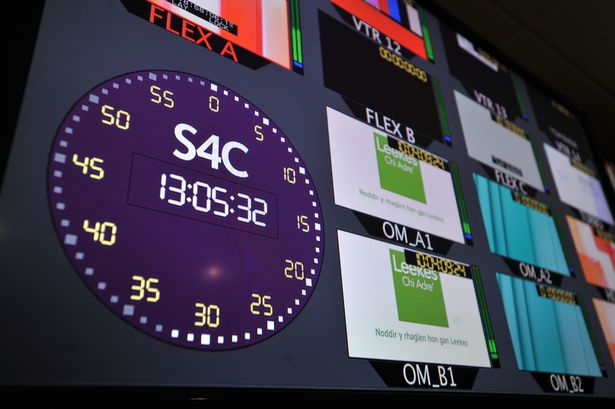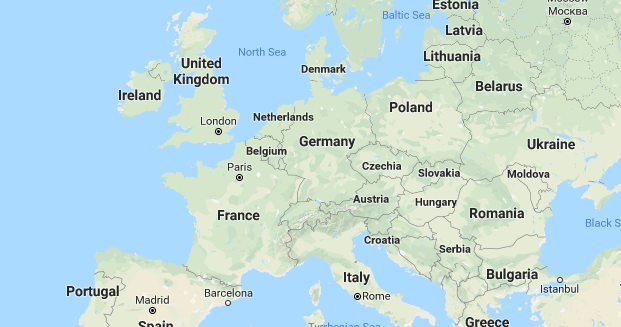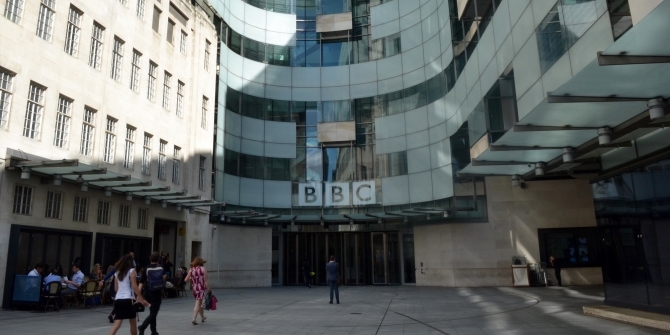 The changing media and technological environment provides challenges for all broadcasters, as their audiences’ media consumption habits evolve at speed. Craig Willis, a researcher at the European Centre for Minority Issues and a PhD Candidate at the Europa-Universität Flensburg, writes here about how a minority language public broadcaster has risen to these challenges and managed to engage significant audiences.
The changing media and technological environment provides challenges for all broadcasters, as their audiences’ media consumption habits evolve at speed. Craig Willis, a researcher at the European Centre for Minority Issues and a PhD Candidate at the Europa-Universität Flensburg, writes here about how a minority language public broadcaster has risen to these challenges and managed to engage significant audiences.
How does a regional broadcaster in a minority language attract over eight million likes on TikTok? Against the trend of declining audience numbers and a reliance on older audience segments, public broadcaster Televisíon de Galicia (TVG) has seen one of its sub-brands hit a sweet spot. DígochoEu (‘I tell you’ in English) was launched in 2020 initially as a tool to spread the language of Galician, regionally recognised in the Autonomous Community of Galicia in northwest of Spain and spoken by approximately 2.2m of the 2.8m Galician inhabitants. Taking a light-hearted approach and published first through its social media accounts, DígochoEu has rapidly grown into one of the regional public broadcaster’s most recognisable brands. This post aims to unpack DígochoEu’s recipe for success and embed this in the broader context of minority language broadcasters and the research that has been fearful of the impact of digitalisation and globalisation on the sector.
As one of the core pillars of language maintenance and revitalisation, media provision in minority languages is an important area of public policy which gives visibility to the language as well as providing opportunities to create a public space of debate in the language. Scholarly work on minority language media began to assess the use of minority languages on social media in the early 2010s, most notably in the edited volume Social Media in Minority Languages. Facebook and Twitter were the most prominent platforms in focus, however the authors considered social media as an alternative or competitor to traditional media outlets such as broadcasting and printed press. At the same time, scholars warned of significant challenges for traditional outlets due to increased media competition in the digital era and suggested younger audiences were unlikely to use traditional media even in online forms. Moreover, a quantitative study across ten minority language spheres in Europe found a 6% reduction in the number of outlets between 2009 and 2016, a figure rising to over 15% for publicly-owned – suggesting this was due to a combination of austerity measures and falling audience numbers.
Such issues are obviously not unique to media in minority languages, however due to their minoritised position, the loss of an outlet can mean there is little or no alternative in a given language. Minority language media outlets have of course not stood still during this wave of digitalisation and changing audience habits, research indicated an increased engagement with online forms (the number of outlets without a web presence decreased from 29% to 9.2% between 2009 and 2016. Moreover, most outlets are active across multiple social media channels. Whilst academic work has begun to consider traditional outlets’ use of social media (for example minority language broadcasters on Facebook), this overlooks those which are used most among younger generations: Instagram and TikTok. The very few publications concerning minority language usage on TikTok are focused on individual rather than institutional users, such as Anna Tudela-Isanta and Alba Milá-Garcia’s piece on Catalan. Given the stark figures showing the growth in popularity of TikTok and Instagram, considering how minority language media outlets are responding is an acute and timely endeavour.
As the public service broadcaster for the Autonomous Community of Galicia in Spain, TVG was created in 1986. One of its most popular outputs was the youth-focused container programme Xabarin Club, launched in 1994 and the home of popular dubbed (into Galician) cartoons such as Dragon Ball and Shin-chan, symbolised by its mascot – a wild boar [Xabarín in Galician]. At its height during the late 1990s and early 2000s, it had accrued over a hundred thousand children as official members, complete with their own membership card. However, its popularity declined rapidly and although the programme is still running, audience figures are low and language activist groups have led campaigns arguing for a standalone channel with increased content. Thus, the situation for children’s content in Galician had been seen as a critical issue in Galician media scholarship, particularly as this genre relates most closely to language maintenance and revitalisation – the challenge to ensure speakers of minority languages in the next generation. It was within this context which DígochoEu was born into.
Fronted by presenter Esther Estévez, DígochoEu is filmed directly on a smart phone in the portrait style which has come to embody TikTok and Instagram videos. Starting out with the intention of being an educational tool, initial videos featured a word or phrase either unknown in Galician or correcting something that was commonly used incorrectly by Galician speakers. Similarly, videos also featured versions of trending content, such as taking a popular dance or song and adding Galician words or descriptions. These videos posted in late 2020 attracted anywhere between 10,000 views up to 150,000 views and were posted daily.
Fast forward almost three years and DígochoEu is still posting the classic educational videos but has also incorporated different formats, seemingly targeting different audience groups. One common form is Esther in conversation with Portuguese or Brazilians, often discussing the linguistic similarities and differences between their languages. A second character, in the form of a puppet fox, Dígochiño, has also been introduced in videos, debuted in a Christmas Day video in 2022, which has been viewed over 500,000 times on TikTok. Whilst TikTok is its main focus, DígochoEu is also present on Twitch, Instagram, Twitter, YouTube and via its own website. Furthermore, the popularity of the channel has seen presenter Esther visit local schools in Galicia, bringing along Dígochiño and creating video content involving school children. Its rapid success has been recognised through winning several local awards relating to language promotion and audiovisual content.
In terms of attempting to establish why DígochoEu has been successful, a few observational suggestions can be made. It is clear that it takes a contemporary approach, coming across as both cool and organic – much like the growing trend of individual influencers / content creators. Interestingly, it does not make its parent brand, TVG, particularly visible – the videos often (but not always) contain just a simple ‘G’ in the top corner, its TikTok account contains no description or mention of TVG at all, and its main website has a standalone URL which does not involve TVG. A previous brief comparative overview of minority language broadcasters on TikTok has suggested this non-institutionalised-appearing approach could be a factor in success.
In the context of the broader challenge across minority language media, the case of DígochoEu suggests that concern over ‘legacy’ minority language media being unable to attract youth audiences could be overcome – if utilising social media in a style and through the platforms which align with the broader global trends. In terms of transferability as a model for other minority language media outlets, the broad popularity of TikTok would suggest this could well fit other linguistic situations. DígochoEu’s high numbers of engagement could be aided by the linguistic similarity between Galician and both Castilian (Spanish) and Portuguese, but there is evidence of success from other cases such as Welsh broadcaster S4C’s sub-brand Hansh’s efforts to engage English-speakers. It could be suggested therefore that the key to success lies rather in the innovative content and organic (appearing) approach.
This post represents the views of the author and not the position of the Media@LSE blog nor of the London School of Economics and Political Science.





